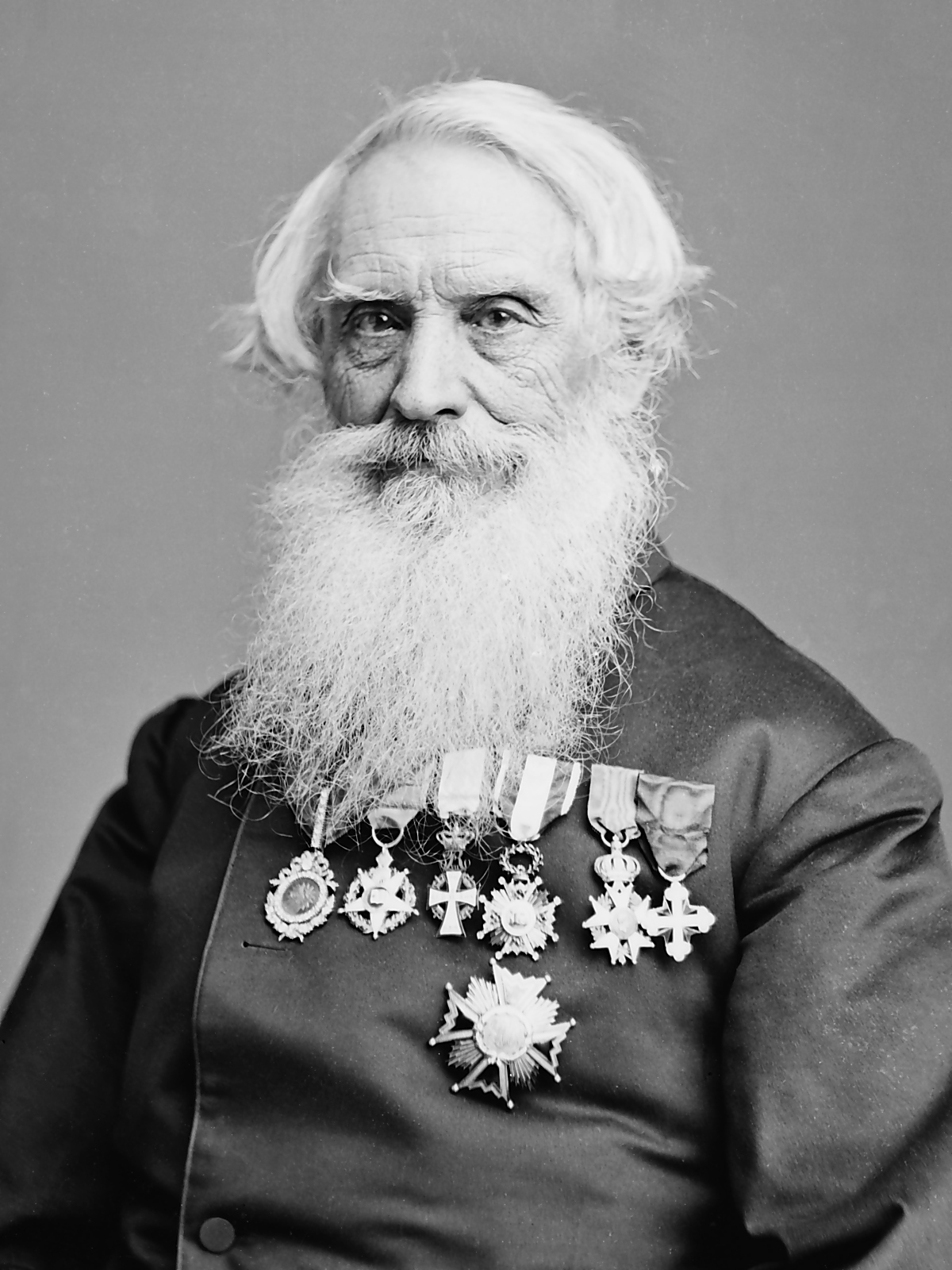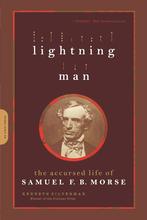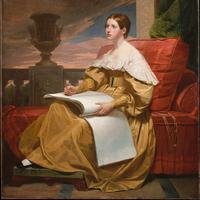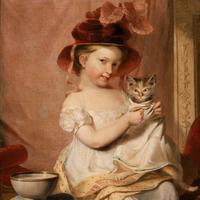More about Samuel Finley Breese Morse
- All
- Info
- Shop
Works by Samuel Finley Breese Morse

Contributor
Samuel Finley Breese Morse graduated from a fledgling Yale University, then called Yale College, in 1810..
About a century later, when Martin Luther King, Jr. was leading marches against segregation and war, Yale decided to name one of its colleges after him, employing master architects Eero Saarinen and Louis Kahn for the job. During the naming ceremonies, the school issued histories of its appreciation for the great inventor Morse, noting his production of more than three hundred portraits, his invention of the Morse code (still in use today), and his work as an educator. It would not be polite, or genteel, or seemly, or whatever you want to call it, to mention the three issues which kept Morse awake nights, which obsessed and tormented him, and inspired him to write entire books in opposition to them: Catholicism, immigration to the U.S., and abolitionism. It's tempting to ignore this other side of the great man, to treat him only as an artist and inventor, but it's necessary to appreciate his art and inventiveness without forgetting his radically embarrassing politics.
Like Leonardo da Vinci and Berenice Abbott, Morse was brilliant in more than one discipline. As an artist, Morse studied with Washington Allston and Benjamin West. His work consists primarily of portraits and history paintings. He did portraits of over eighty people, including a Pawnee man, his own father, politicians, and judges. His symbolic tableau painting, the House of Representatives, is now now at the Corcoran in D.C. A widower, he married twice, fathering seven children; you could say he was a busy dude. He did a brilliant portrait of his daughter Susan as an adult. He gave lots of dough to charity, and his will included about $10 million in today's money, although he never made much from his infamous code. He founded and served as president of the National Academy of Design in New York, was a professor at NYU, opened one of the first daguerreotype studios with John William Draper, and still found a few free moments to discover the first practical electromagnetic telegraph and signaling code!
His feelings about Catholicism were connected to his family's strict Puritan Calvinism. He noticed that many immigrants to the U.S. were Catholic, coming from Italy, Ireland, and Portugal, for example, and, for some reason, he saw what he called a "conspiracy" by which immigrants (like his own grandparents) would harm the U.S. Visiting Europe, he soaked up the work of the Old Masters, and was a tad bit jealous that those pesky Catholics could paint, sculpt, invent, and build so well. Knowing the power of language, he called Catholicism "Popery," hoping to redefine its name. He felt that his translation of the bible sanctified the institution of slavery, writing that it was as necessary as parenthood or employment.
Like the dots and dashes of the Morse code which has helped so many millions of people, Morse was a binary man, with two highly-developed identities: the side of invention, engineering, writing and artistic genius, and the side of rivalry, resentment, and anger.
Sources
- Constitution and by-laws of the National Academy of Design. New York: E.B. Clayton, 1826.
- Patterson, Samuel White. Famous Men and Places in the History of New York City. New York: Noble & Noble, 1923.
- Morse, Samuel. Foreign conspiracy against the liberties of the United States. New York: Van Nostrand & Dwight, 1836.
- Morse, Samuel. Imminent Dangers to the Free Institutions of the United States: Through Foreign Immigration and the Present State of the Naturalization Laws. New York: John F. Trow, 1854.
- Morse, Samuel. Samuel F.B. Morse: his letters and journals. New York: Houghton Mifflin, 1914.
- Richards, William. Revolt and Reform in Architecture's Academy: Urban Renewal, Race, and the Rise of Design in the Public Interest. London: Routledge, 2016.
- Román, Antonio. Eero Saarinen: An Architecture of Multiplicity. Princeton: Princeton Architectural Press, 2006.
Featured Content
Here is what Wikipedia says about Samuel Morse
Samuel Finley Breese Morse (April 27, 1791 – April 2, 1872) was an American inventor and painter. After establishing his reputation as a portrait painter, Morse, in his middle age, contributed to the invention of a single-wire telegraph system based on European telegraphs. He was a co-developer and the namesake of Morse code in 1837 and helped to develop the commercial use of telegraphy.
Check out the full Wikipedia article about Samuel Morse













